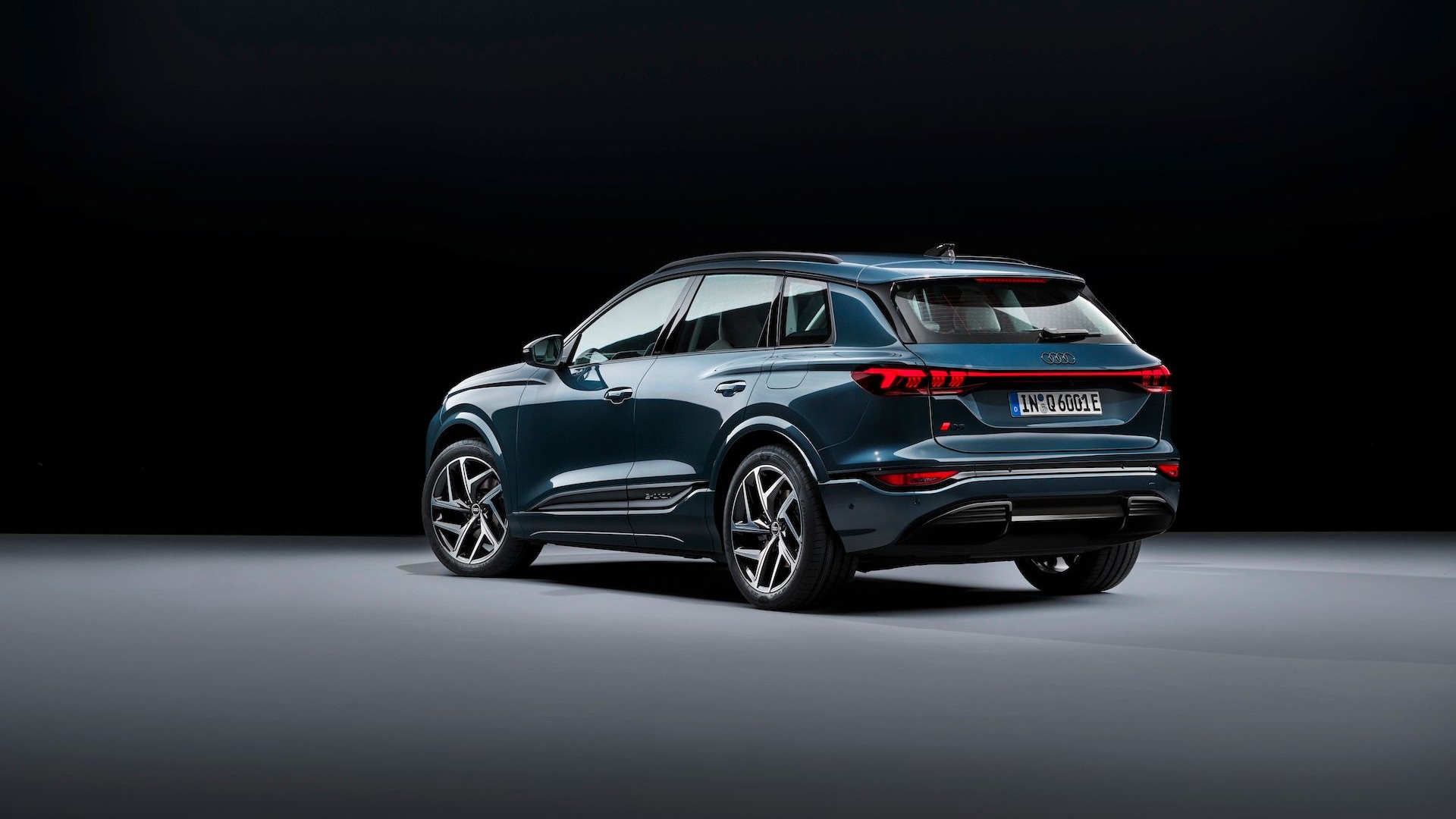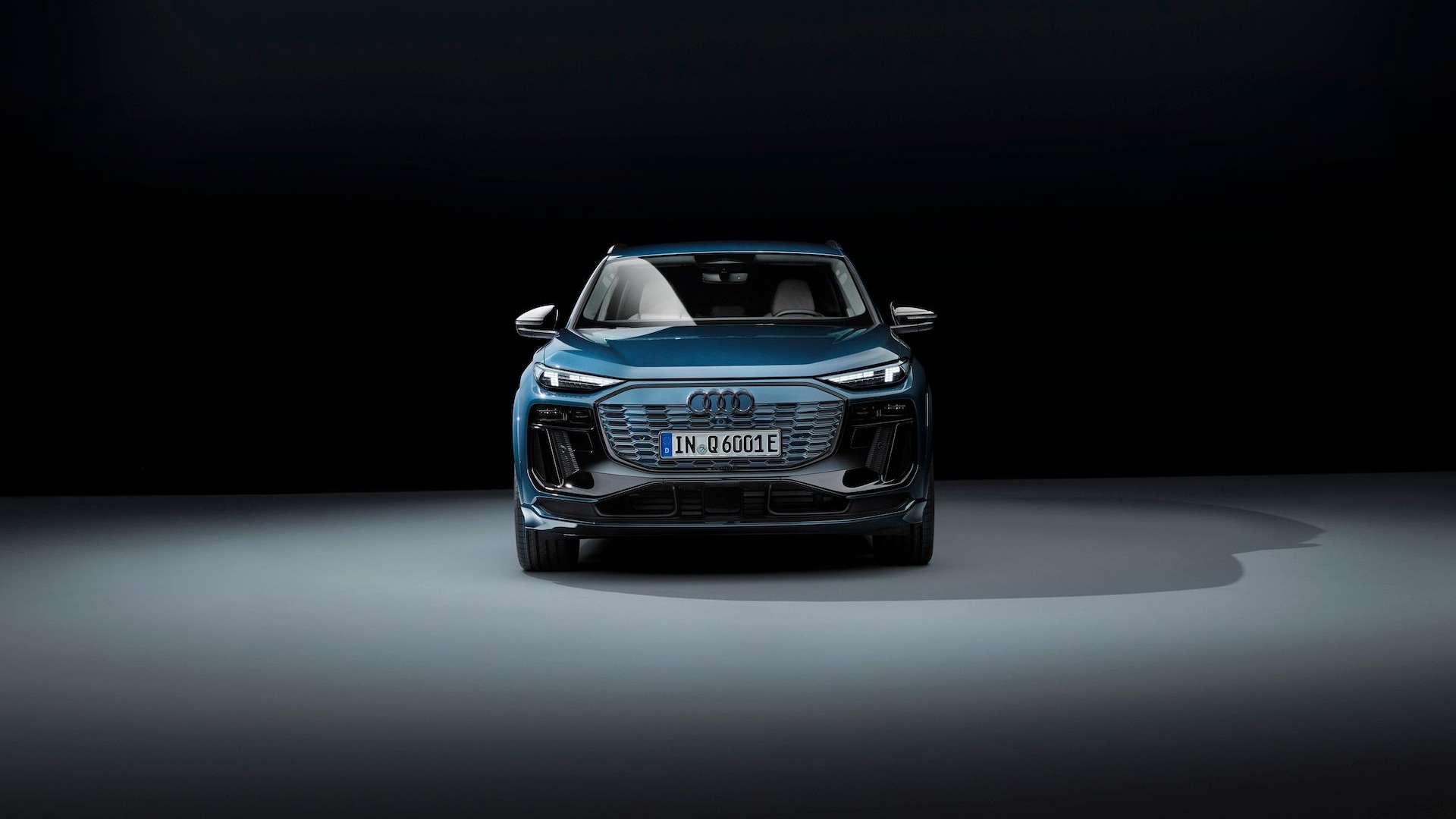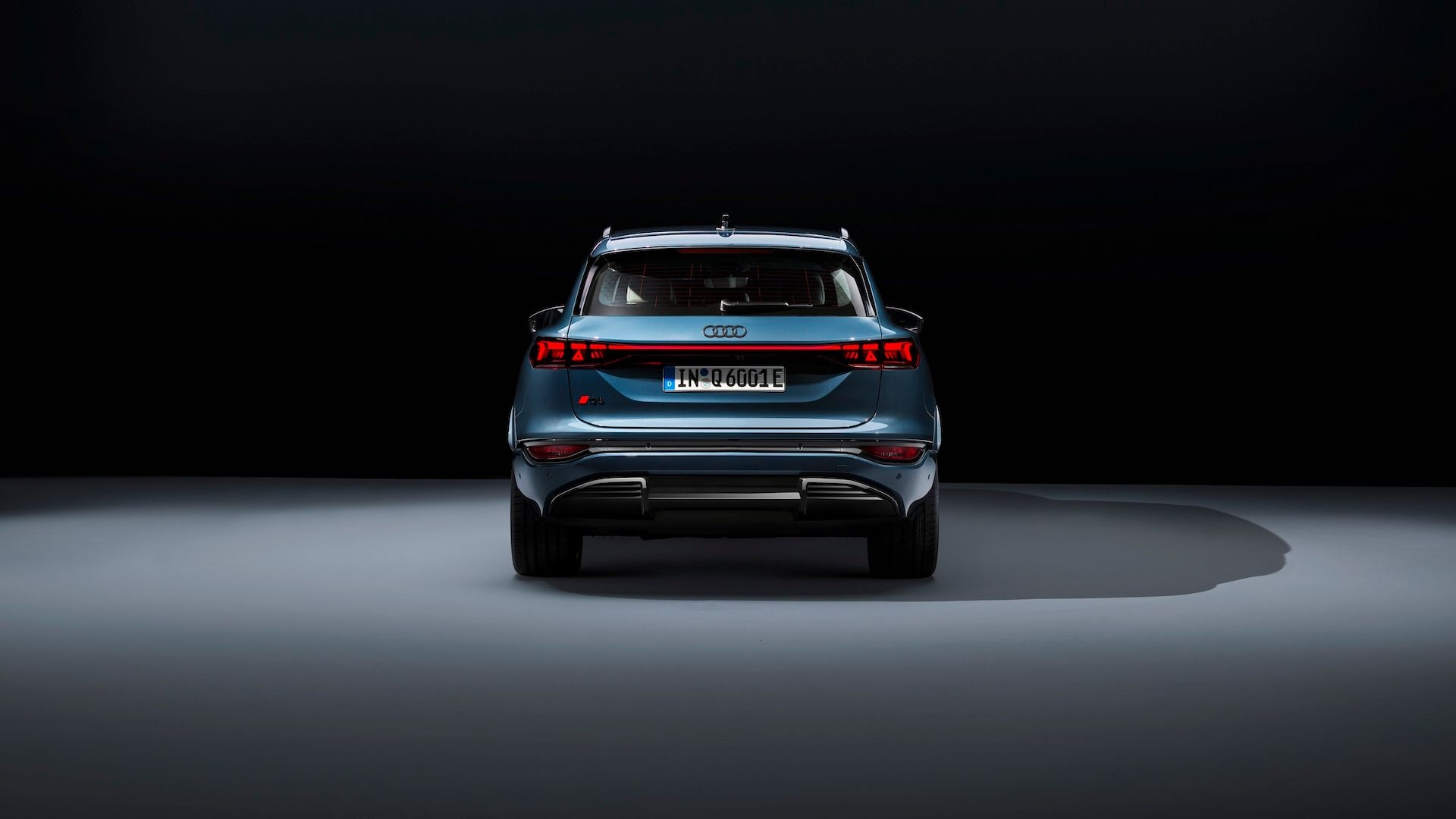I step on the brake with my left foot, press the accelerator to the mat with my right—then, slip off on the left. Motors whirl to life as they whorl out warp-speed forward thrust. Traffic cones fly by in the side windows like mailboxes on a country road until I let off the pedal and let “B” mode’s regenerative braking lasso this electric SUV down for a gradual right turn back into its parking spot.
Even the briefest exposure to Audi’s new electric SUV, the 2025 Q6 E-Tron, it’s easy to see the promise in the first fully conceived, best-executed EV from the brand.
Audi still sells some good-to-great gas-powered SUVs, but the EV companions like this Q6 E-Tron are the ones that will catapult it into the future, powerfully.
The Q6 E-Tron marks the first Audi vehicle on a new VW Group architecture it developed: PPE, which it shares initially with the Porsche Macan EV. Promised to be Audi’s most efficient EV yet, it’s said to be a third more efficient and a third more powerful at the same time than its E-Tron SUV predecessor (now the Q8 E-Tron).
With seats for five and a footprint like its intended target, the Tesla Model Y, the Q6 E-Tron also pits itself against Hyundai’s E-GMP trio of the Kia EV6, Hyundai Ioniq 5, and Genesis GV60, while Ford’s Mustang Mach-E also factors in the same size and battery class. The Audi commits none of the quality fumbles of the Tesla (or the Ford: see interior trim), while it angles against the Hyundai trio for technology and quality. It’s fancy without the frippery—and it’s fast without foibles.
It arrives in the U.S. late in 2024 as a 2025 model. I’ve only driven it for very short distances, but I can see the promise in its new architecture, its battery choices, its dual-motor drivetrain, and its high-end suspension.
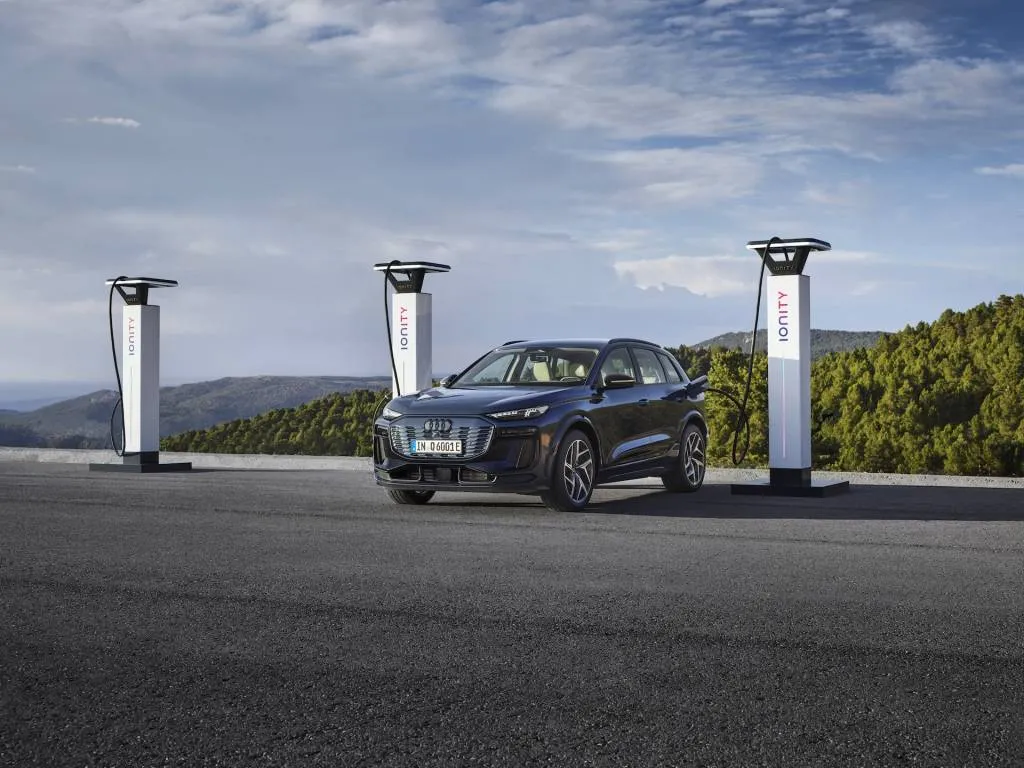
2025 Audi Q6 E-Tron
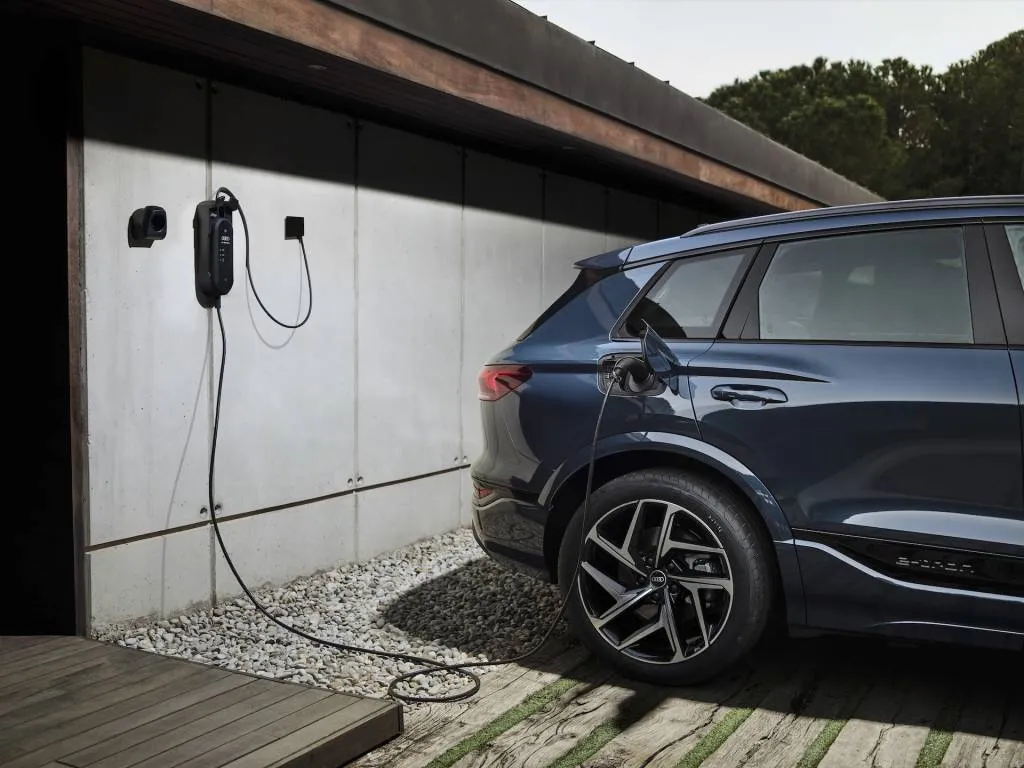
2025 Audi Q6 E-Tron
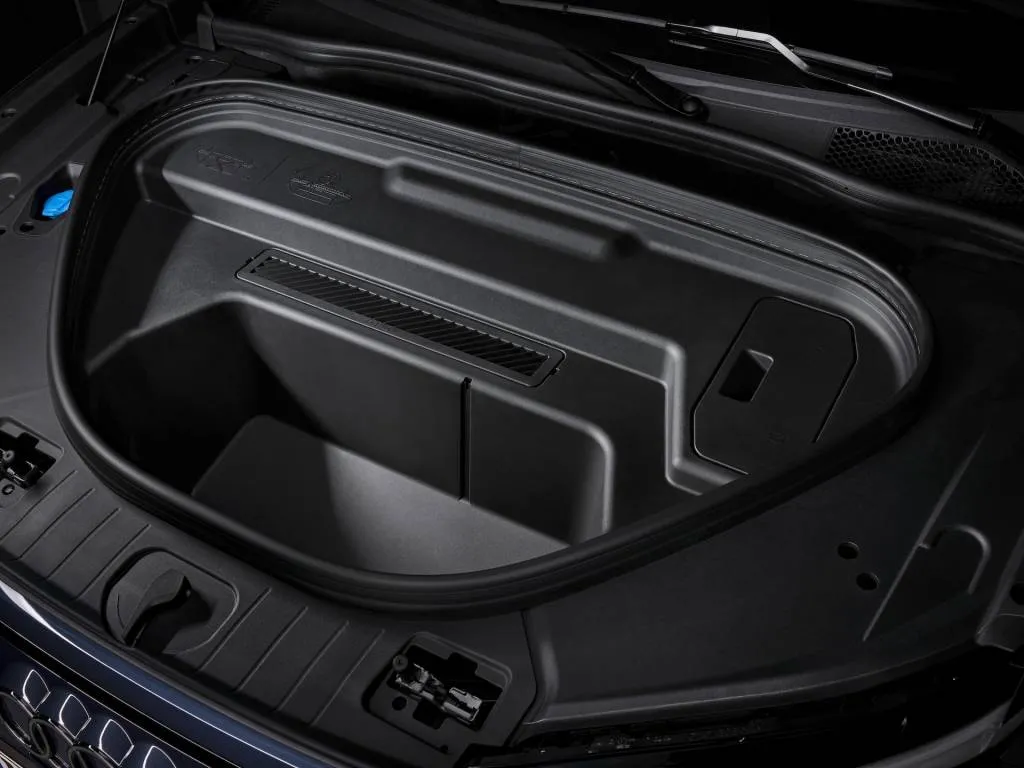
2025 Audi Q6 E-Tron
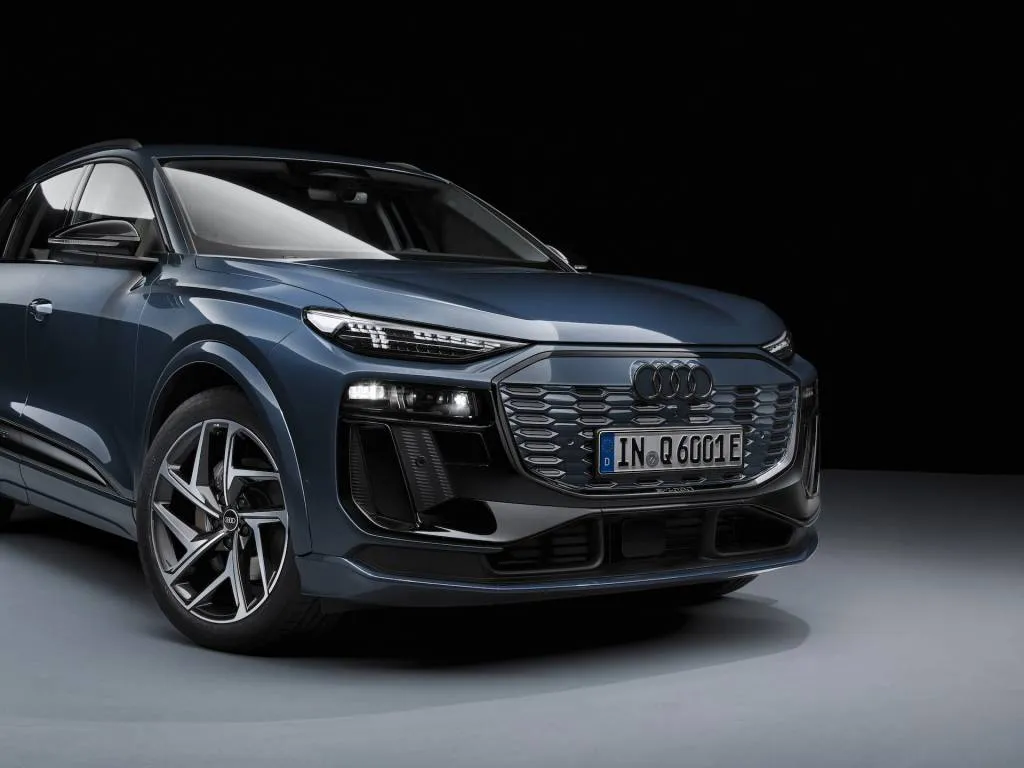
2025 Audi Q6 E-Tron
What is the 2025 Audi Q6 E-Tron powertrain?
The foundation of the Q6 E-Tron in this rendition of PPE sits under its five seats. It’s a 100-kwh (gross) battery pack that can use up to 94.4 kwh of that capacity. Its 12 modules of 180 prismatic CATL cells, assembled in Ingolstadt into packs which comprise the floor of the Q6, weigh about 1,257 pounds. A 10-module, 83-kwh (gross) version will factor into vehicles made for markets outside the U.S.
In the PPE universe, Audi bets on bigger battery modules, and fewer of them, to ease manufacturing and to cut materials use—and therefore, planet-load. PPE requires fewer battery connectors, while it also enables better cooling and warming for the battery with predictive management, which helps maintain optimal condition.
Audi has chosen to make the most of the pack’s capacity from the outset; it hasn’t reserved some energy for future upcharges and upgrades delivered over the air, as Mercedes and other brands have done. It does sport a vastly more powerful computing structure, which leaves ample room for OTA updates as well as future V2X uses.
Compared to first-gen E-Tron, Green Car Reports Best Car To Buy 2020, Audi reports the Q6 E-Tron’s battery energy density has risen 62 percent, while energy consumption has dropped 30% and drive-unit costs have dipped 15 percent.
Audi farms dual motors for the Q6 E-Tron in Hungary, rated at 140 kw in front and 280 kw in the rear. Total system output hits 422 hp in the core Q6 edition, which weighs about 5,150 pounds, but in a higher-draw “boost” mode, it can deliver up to 456 hp. Audi quotes a 0-60 mph in 5.0 seconds with launch control, as I’ve stomped my way through under the fittingly steel-gray sky near the Munich airport.
The higher-performance model, the SQ6 E-Tron, taps battery energy more voraciously, to send 483 hp to all four wheels, or up to 510 hp in the boost mode. That’s good for a 0-60 mph run in 4.2 seconds, Audi says, while the SQ6 can also top out at 143 mph.
No specs have been quoted for the most efficient version to come, a single-rear-motor version—or for the top performance edition, an RS Q6.
Audi has confirmed the Q6 E-Tron will tow up to 4,400 pounds, though it won’t offer a specific off-road model. That’s just as well: with its conventional steel suspension or its upgraded air suspension and adaptive dampers (standard on SQ6, an option on the Q6), this SUV and Audi SUVs as a genre have shied away from any hardcore rock-crawling or trail-clambering connotations—especially those that would affect on-road performance.
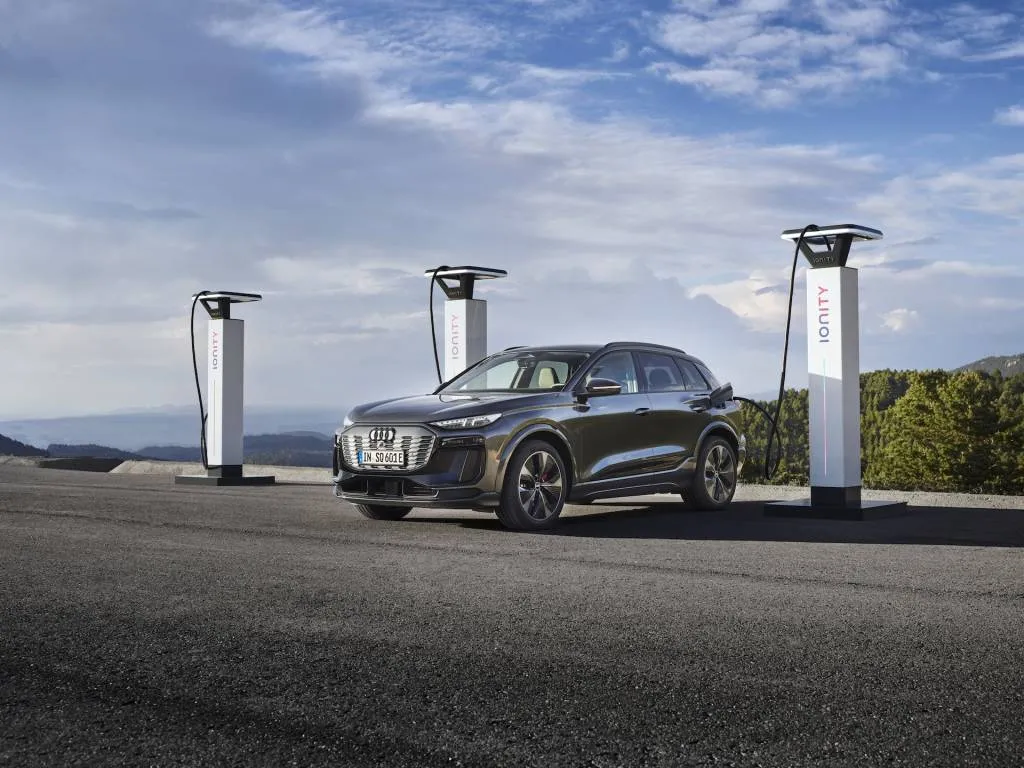
2025 Audi SQ6 E-Tron
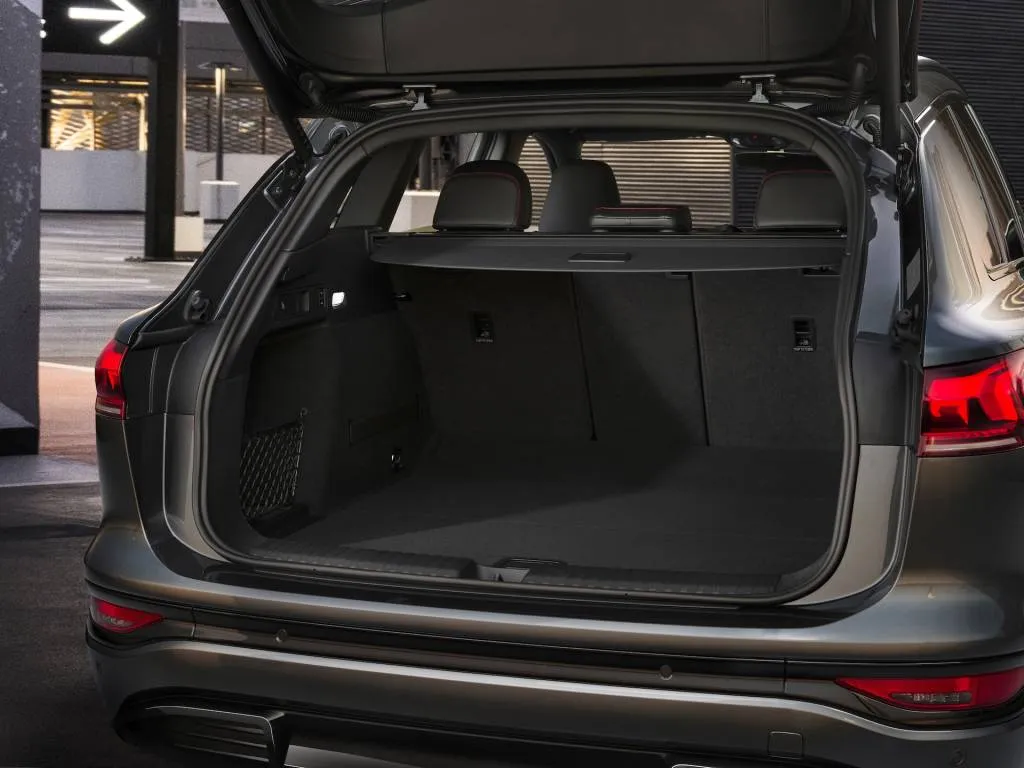
2025 Audi SQ6 E-Tron
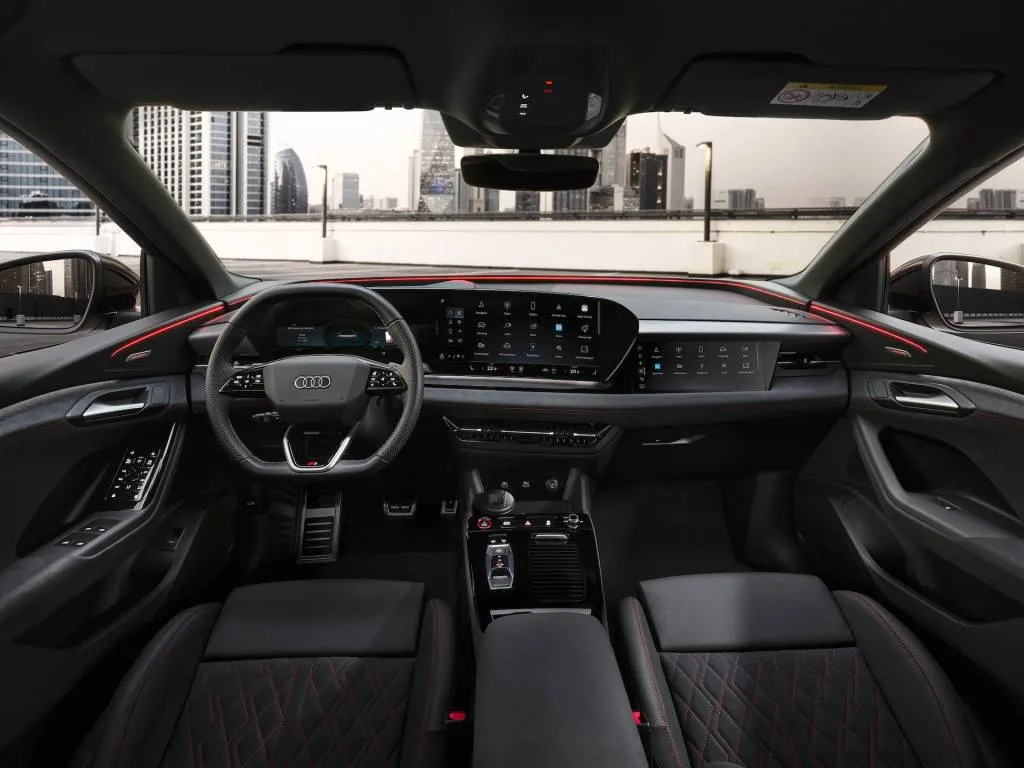
2025 Audi SQ6 E-Tron
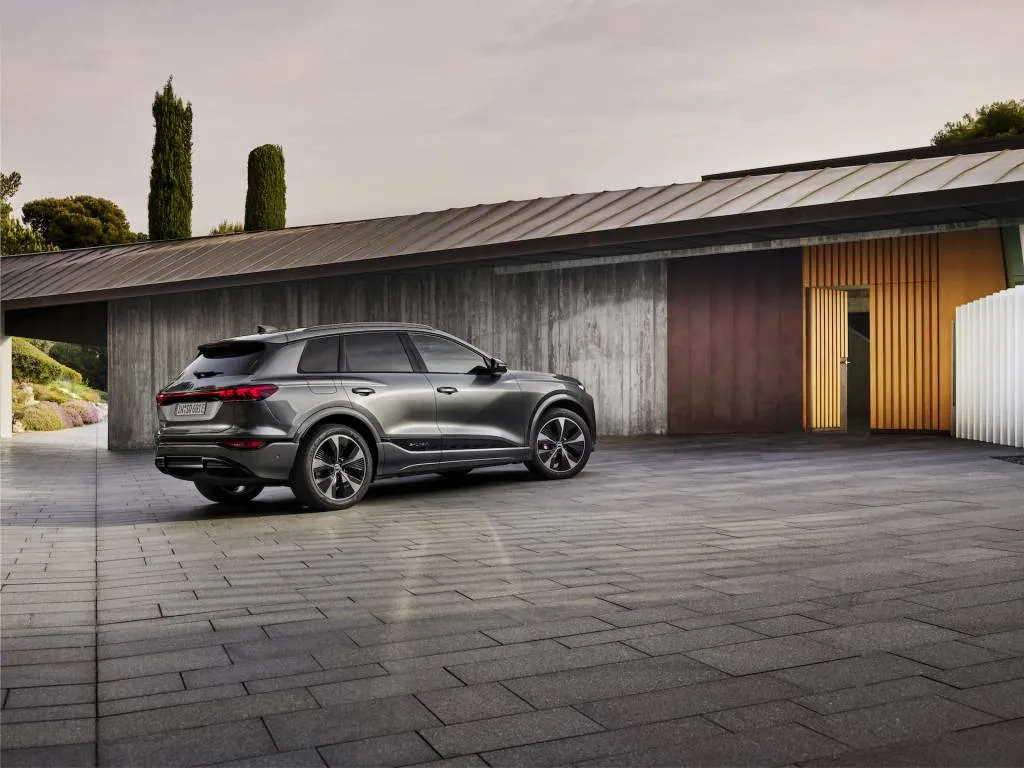
2025 Audi SQ6 E-Tron
How does the Q6 E-Tron drive?
With just two laps in a parking lot gymkhana, we can’t say much if anything about the way the Q6 E-Tron drives. Launch mode has the catapult effect that’s intended, though ultimate acceleration is more in line with a Mach-E than a Plaid. With three levels of paddle-controlled regenerative braking and a one-pedal “B” drive mode that the Q8 E-Tron lacks, the Q6 E-Tron promises to blend in its conventional brakes better and later than most systems. Audi believes that’s a more efficient and smoother way to deliver its maximum of 0.3g of deceleration in one-pedal mode. That’s more than the Best Car To Buy 2022 Lucid Air generates, and in the Audi, our very short drive telegraphed some silken transitions between motors and friction brakes, something we also noted in our 2024 Q8 E-Tron test drive review.
How fast does it charge, and what is its battery range?
The EPA hasn’t tested the Q6 E-Tron yet, but Audi has committed to more than 300 miles of range for the base Q6 “60” model with dual motors. With an AC charge port on the right and a CCS port on the left, the Q6 arrives too soon for Audi’s transition to the Tesla-style NACS charging interface, though it will transition into it soon.
The Q6 E-Tron will accept up to 270 kw of DC fast-charging and will be able to top off its battery pack from 10-80% in as little as 21 minutes. Where possible on lower-output chargers, the Q6’s 800-volt system can separate its pack into twin 400-volt virtual packs; the car will bring both to the same state of charge first, then charge the banks in parallel at up to 135 kw. Plug & Charge connectivity will be fitted from the get-go.
For home charging—which accounts for the vast majority of luxury-priced electric cars—the Q6 E-Tron will be able to recharge in about 10 hours on a 40-amp 240-volt AC charger.
2025 Audi Q6 E-Tron
2025 Q6 E-Tron: familiar styling, better infotainment
The Q6 E-Tron weaves itself tightly into Audi’s existing electric-SUV family. The shield at its front end wears its four-ring logo proud atop a set of active shutters that give the not-grille texture, even when the body-color base model swaps into gray and black on higher-trim editions. From the side the Q6 resembles nothing less than a Bentley Bentayga, with pronounced brows over 19- to 21-inch wheels rendered in near-flush spokes that speak of lots of aerodynamic attention. Audi won’t be able to offer the trick dynamic LED lighting that it will sell elsewhere: the NHTSA code means its LED signature must remain fixed on American roads, while Chinese and Polish and Irish drivers will be able to flip through eight different lighting arrays on a whim. U.S. drivers will get to choose a less formal Sportback roofline, but not in the first model year.
The Q6 E-Tron shows off a new interior that wraps around the driver in a cool tech embrace. It empanels an 11.9-inch digital “virtual cockpit,” in Audi-speak, that blends mapping, infotainment, and vehicle displays in a complex show of force. The central 14.5-inch touchscreen splits off navigation and vehicle and infotainment functions in the (slightly) more traditional way, dressed in pencil-thin fonts and crisply outlined icons. A 10.9-inch passenger screen has a digital privacy blind that blocks the driver from watching a movie on the go—but allows it for the front passenger. Android Automotive OS forms the core of the operating system, but wireless Apple CarPlay comes gratis, and a greatly expanded set of recognized voice commands liberates the cabin from the old haptic interfaces in favor of voice and touch.
Both nestle in an environment defined by dogbone-shaped, softly padded dash and door panels capped by wood or metallic trim. It’s a clubby place, not relentlessly stark like the Model Y suite.
At 187.8 inches long, 64.9 inches tall, 78.5 inches wide, and with its 114.1-inch wheelbase, the Q6 E-Tron tangles most directly with the Model Y, though. Our brief exposure showed the appeal of Audi’s styling choices and of its usual high grade of seat comfort. And with up to 53.9 cubic feet of cargo space behind the front seats and a 2.2-cubic-foot frunk, the Q6 E-Tron doesn’t come up shy on room.
It leans in with safety technology too, from standard automatic emergency braking, to adaptive cruise control, blind-spot monitors, and automatic high beams.
Prices haven’t been confirmed, but an entry sticker of about $70,000 seems a safe bet, with a $90,000 bill for the SQ6 E-Tron in sight. Neither version will qualify for federal tax credits, however, since the batteries come from CATL and get put together in Germany.
We’re eager to spend more time in what’s clearly Audi’s best first shot at a new EV architecture yet. Stay tuned: we’ll drive the Q6 E-Tron later this year, in advance of its on-sale launch, expected by early December 2024.
Audi paid for the travel expenses to and in Munich that enabled this firsthand report.
